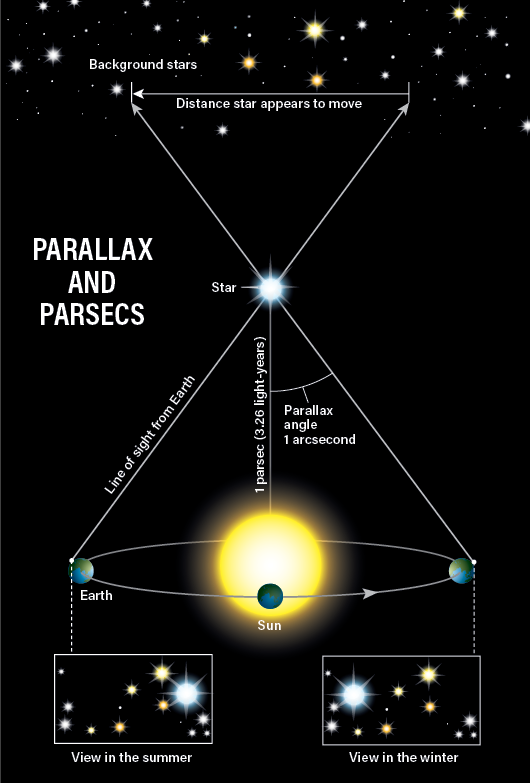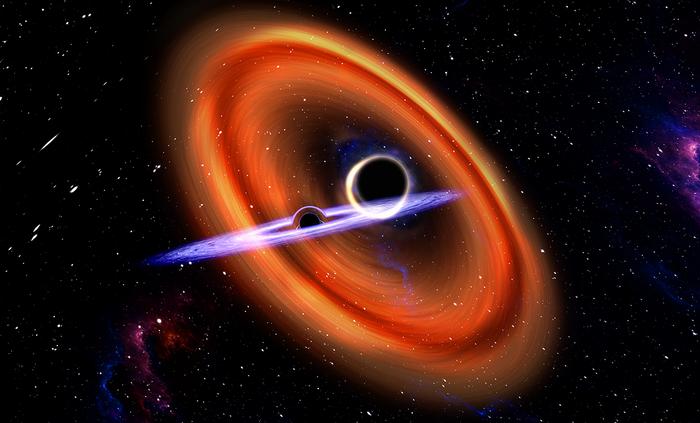Key Takeaways:
- A parsec is a unit of astronomical distance.
- It's based on the apparent shift of a star's position (parallax) as seen from Earth.
- This shift is measured as an angle, and a parsec is defined by a 1-arcsecond shift.
- The 3.26 light-year value results from the geometry of Earth's orbit and the parallax angle definition.
Question: Why is a parsec 3.26 light-years and not some other number?
Launie Wellman
Festus, Missouri
Answer: A parsec, or “parallax second,” is defined as 3.26 light-years because of how it is measured. Earth circles the Sun, making one complete orbit per year. Over the course of several months, nearby stars appear to move with respect to more distant objects — an effect called parallax. This is because as our planet moves, our viewpoint changes.
One of the simplest ways to see for yourself how this works is to hold your hand at arm’s length in front of your face and raise one finger. Close just your left eye and observe where your finger appears against the background. Next, open your left eye and close your right. Your finger will appear to shift because each eye views it from a slightly different angle.
Translated to the stars in the sky, two photographs of the same nearby star taken six months apart will show it appearing to move against the background of more distant stars because Earth has moved to the other side of the Sun in its orbit.
If you draw a simple diagram, you’ll see that the distance the star appears to move is related to the angle at which it is viewed. The two different sightlines, one at each end of Earth’s orbit, create a triangle; the parallax angle is defined as half the angle at the triangle’s apex. And a parsec is the distance — 3.26 light-years — that a star must lie from the Sun for its parallax angle to be exactly 1″. That’s why a parsec has that value, and not any other.
Although astronomers often measure distant objects in parsecs or megaparsecs (1 megaparsec is 1 million parsecs), only nearby objects have parallaxes that we can actually measure. The European Space Agency’s Gaia mission, currently underway, can measure parallax angles of just a few millionths of an arcsecond. That means it can measure, to within 20 percent accuracy, the distances of stars that lie tens of thousands of light-years away.
Alison Klesman
Associate Editor










